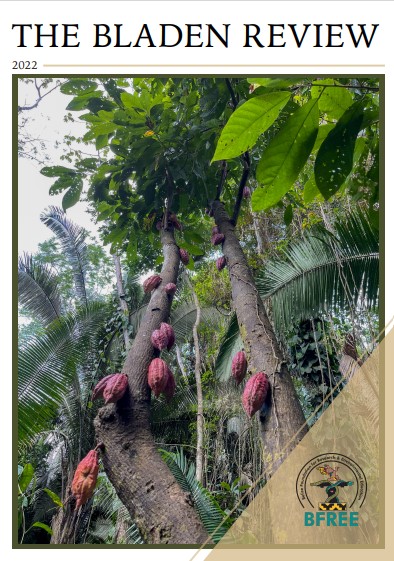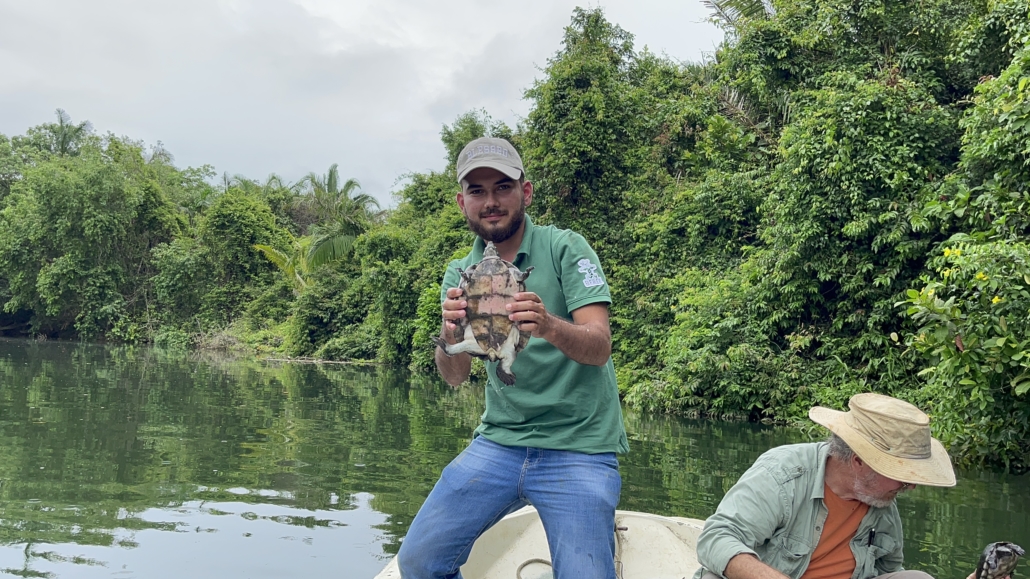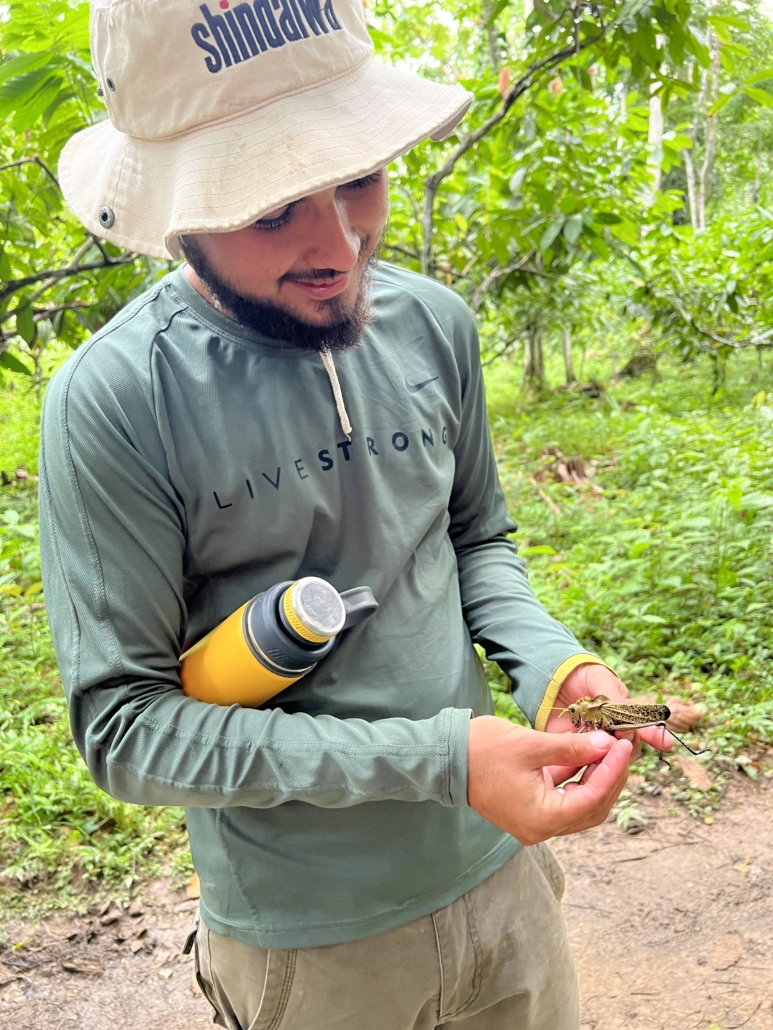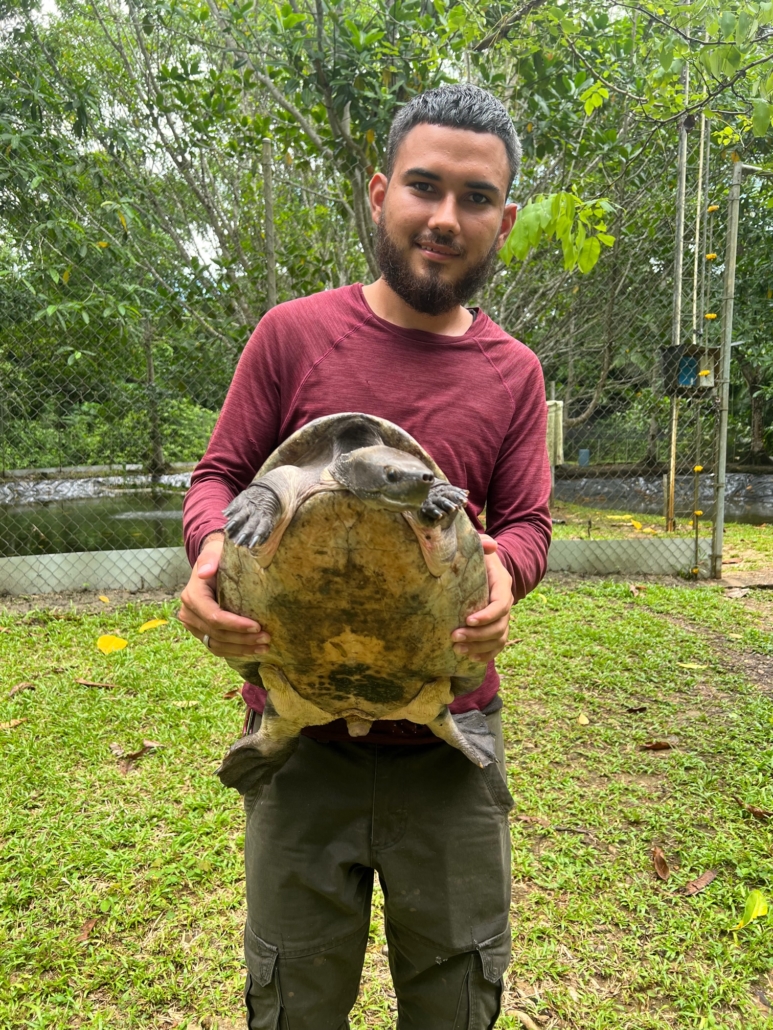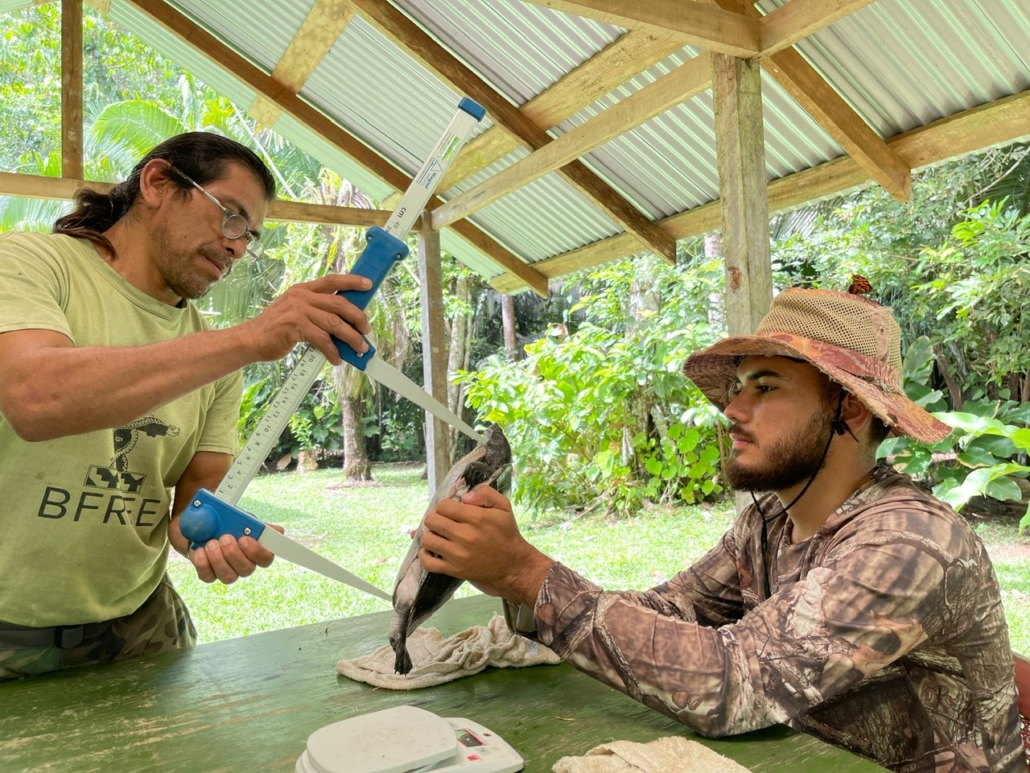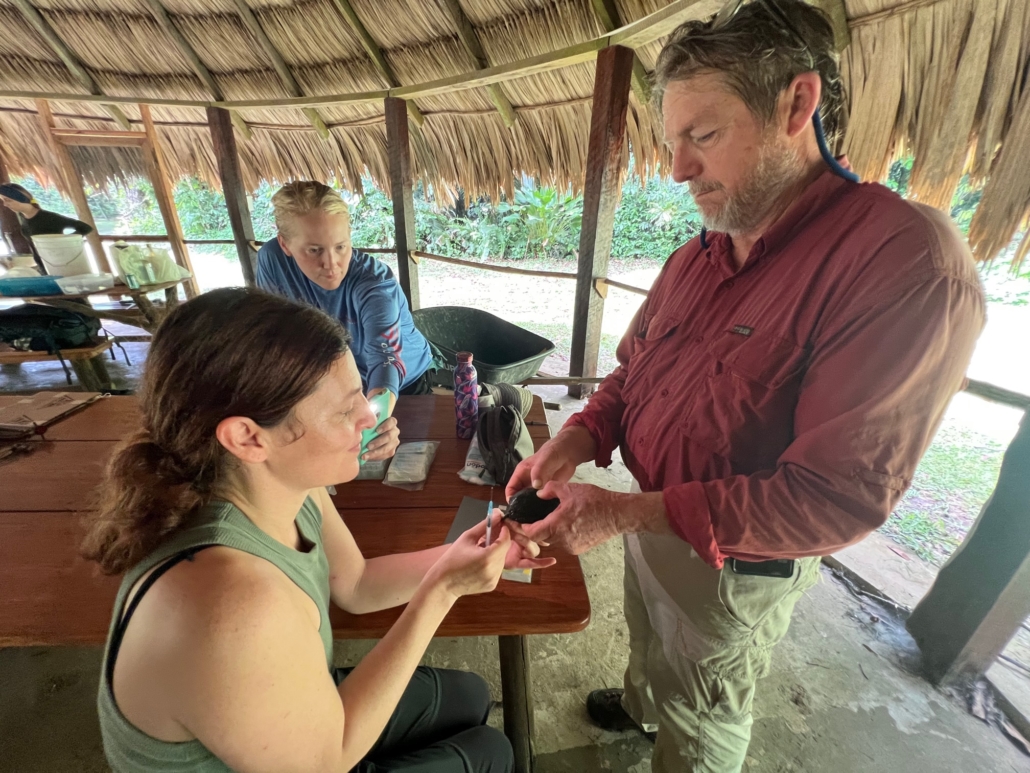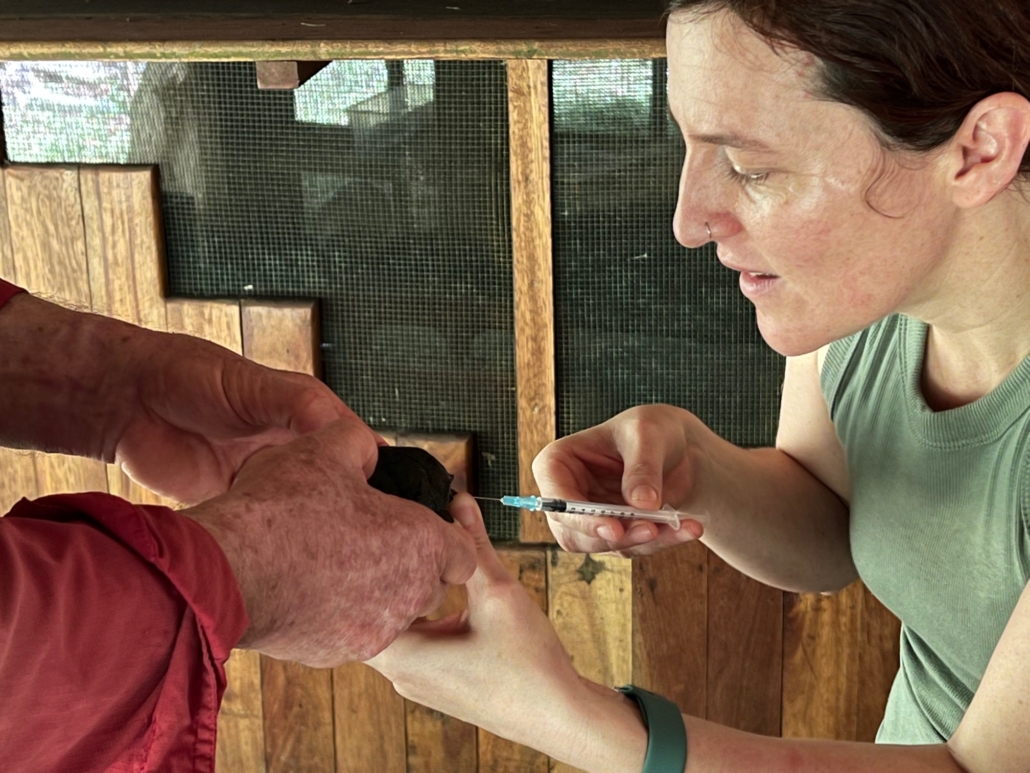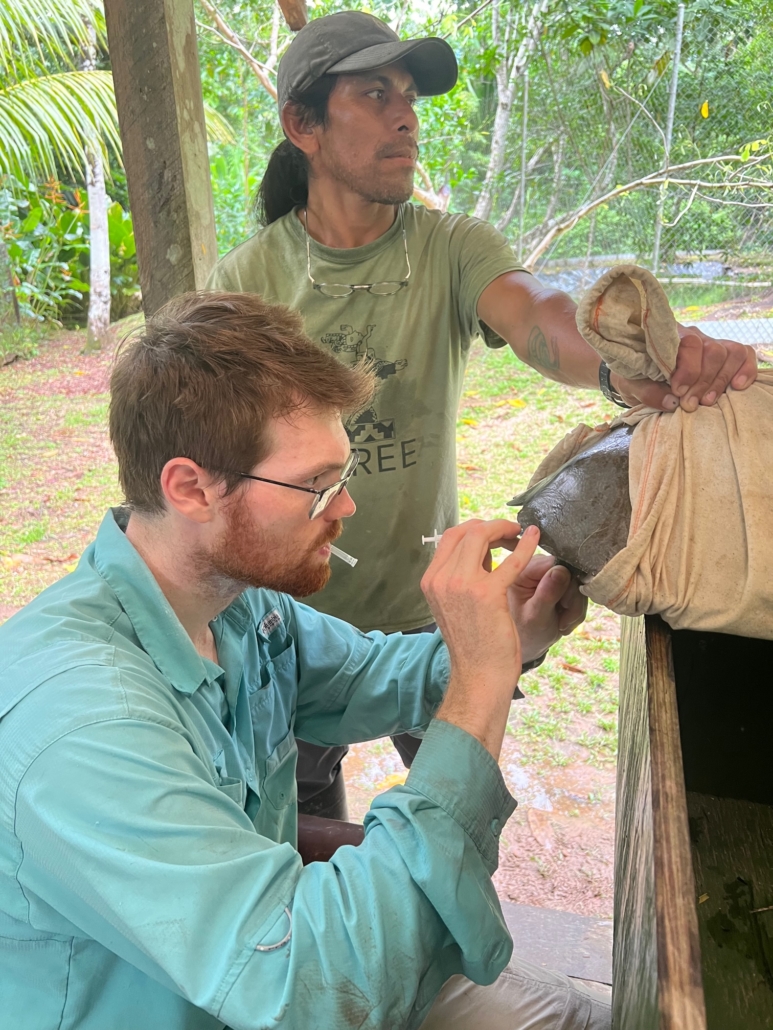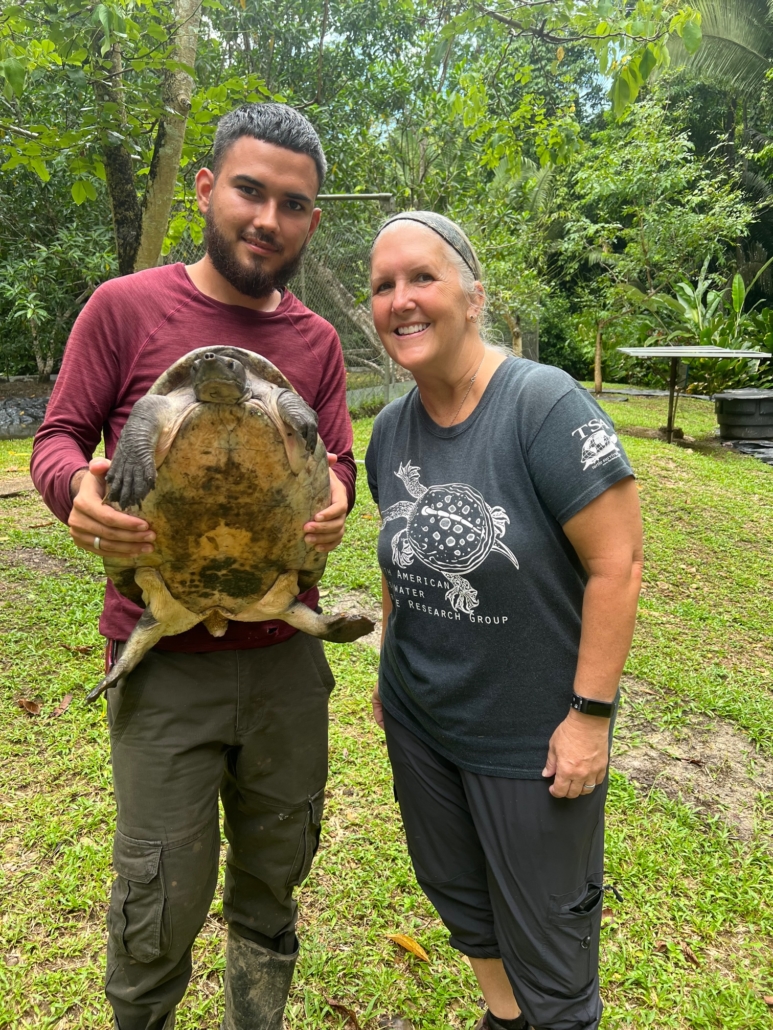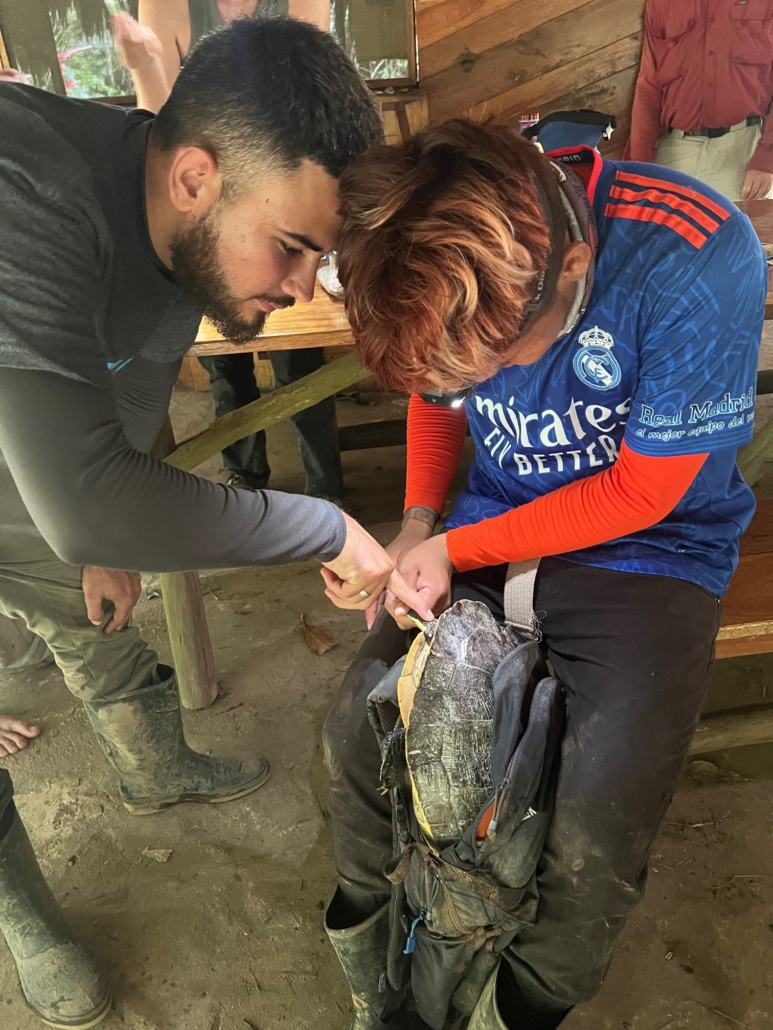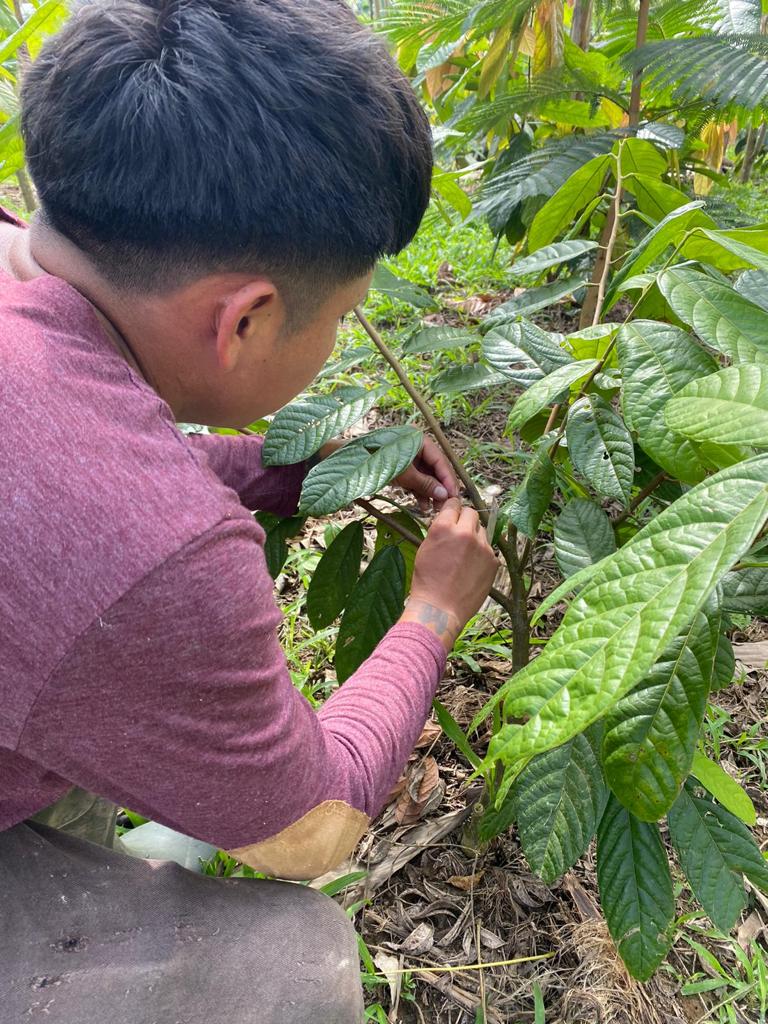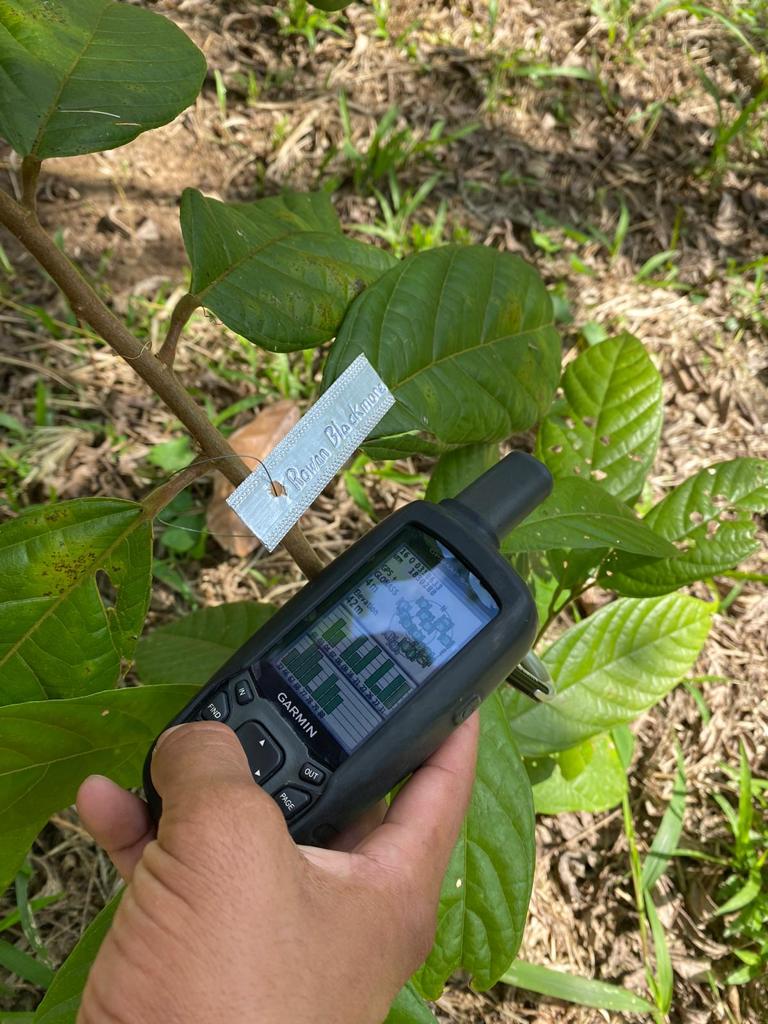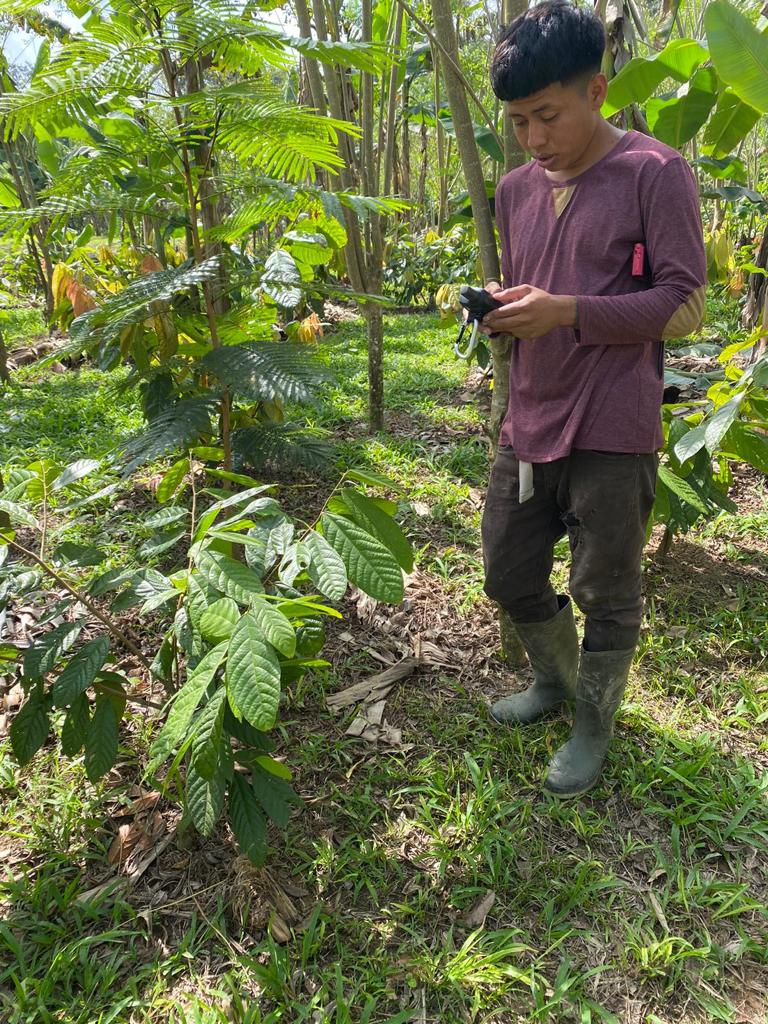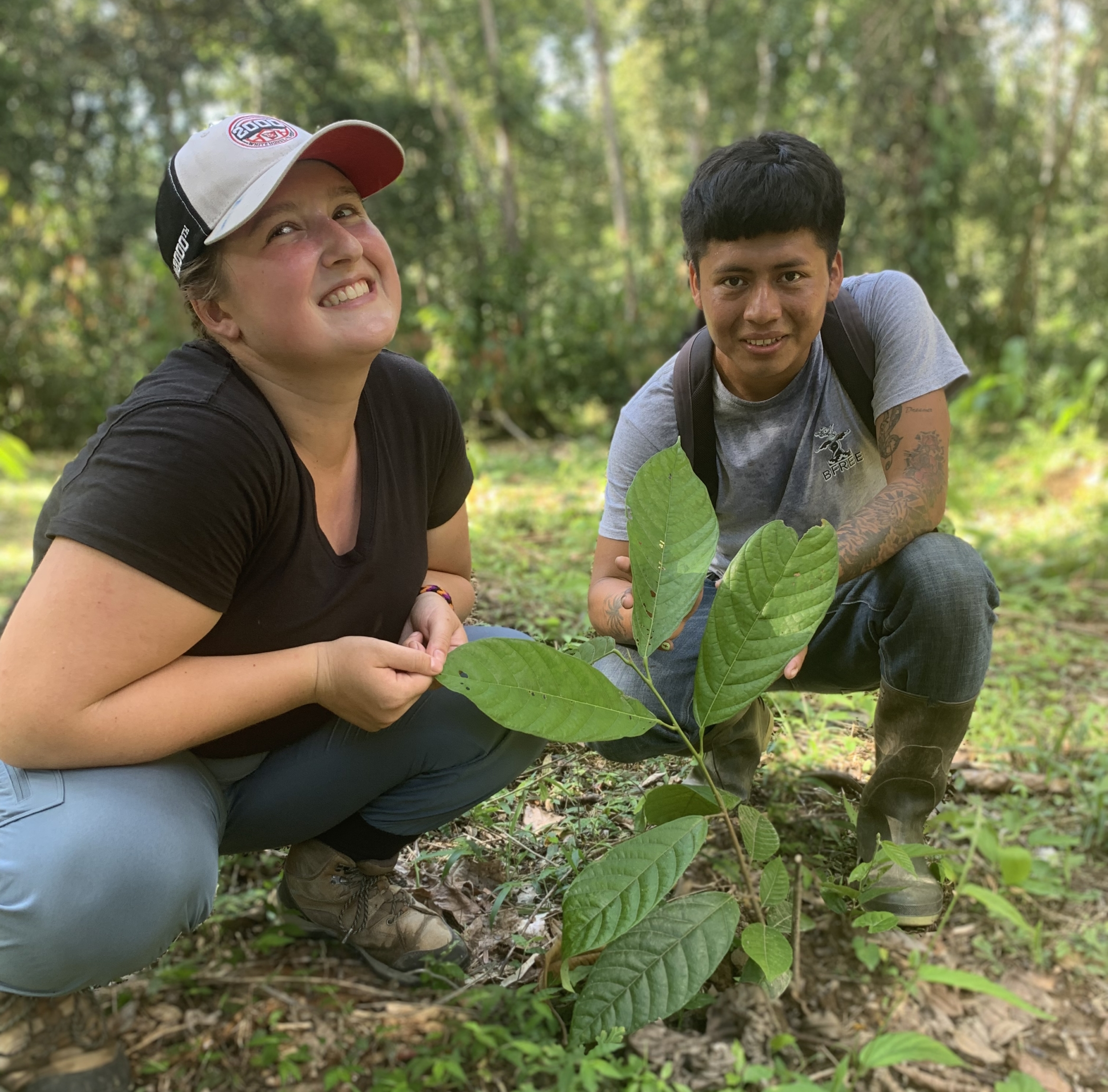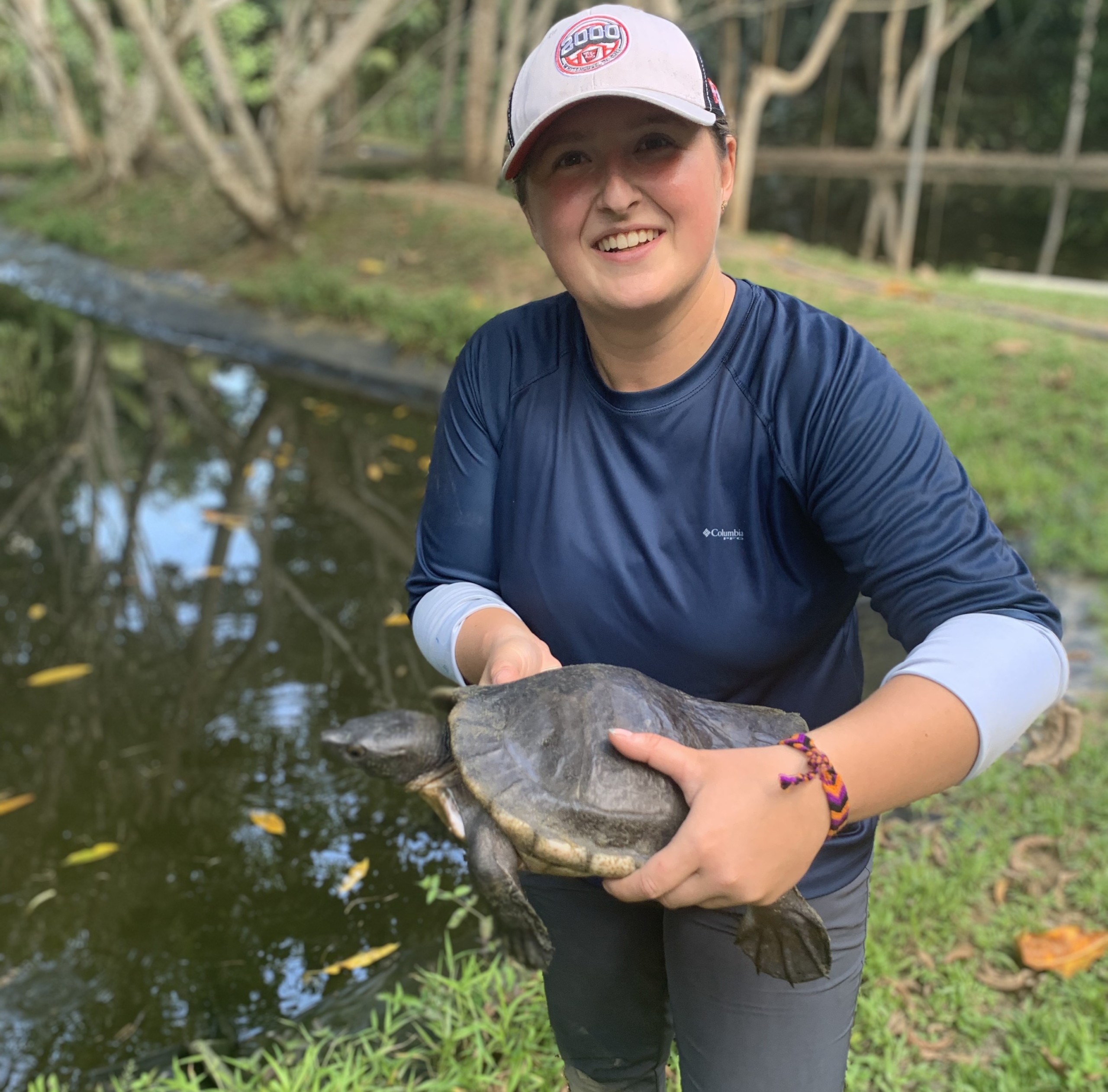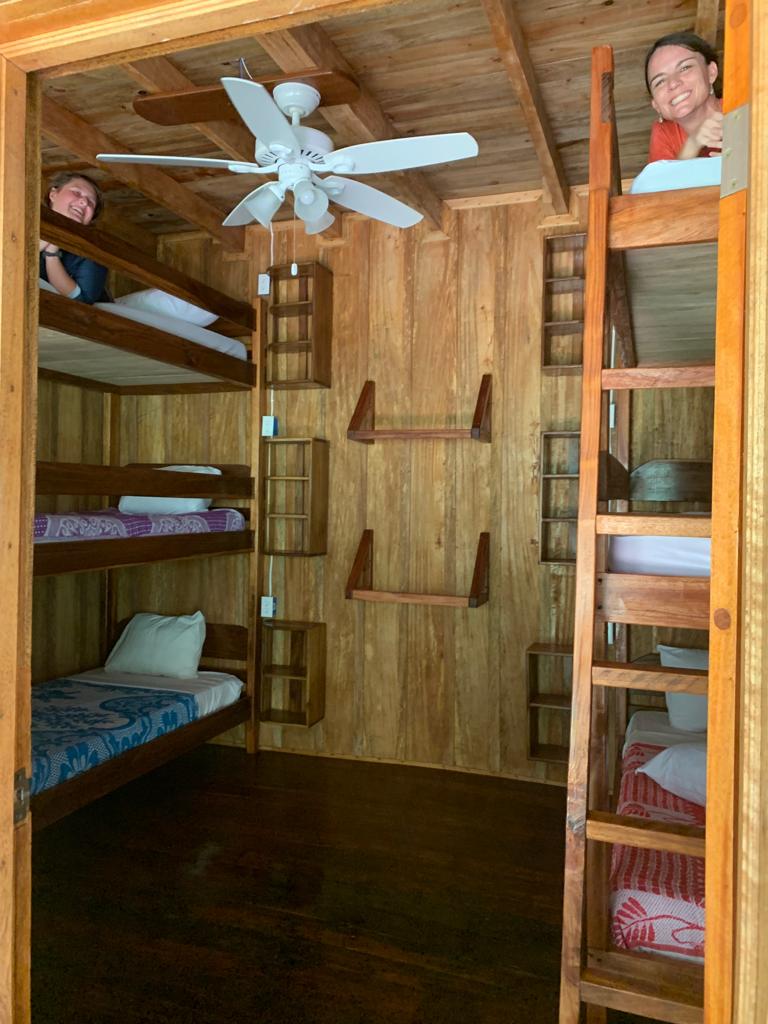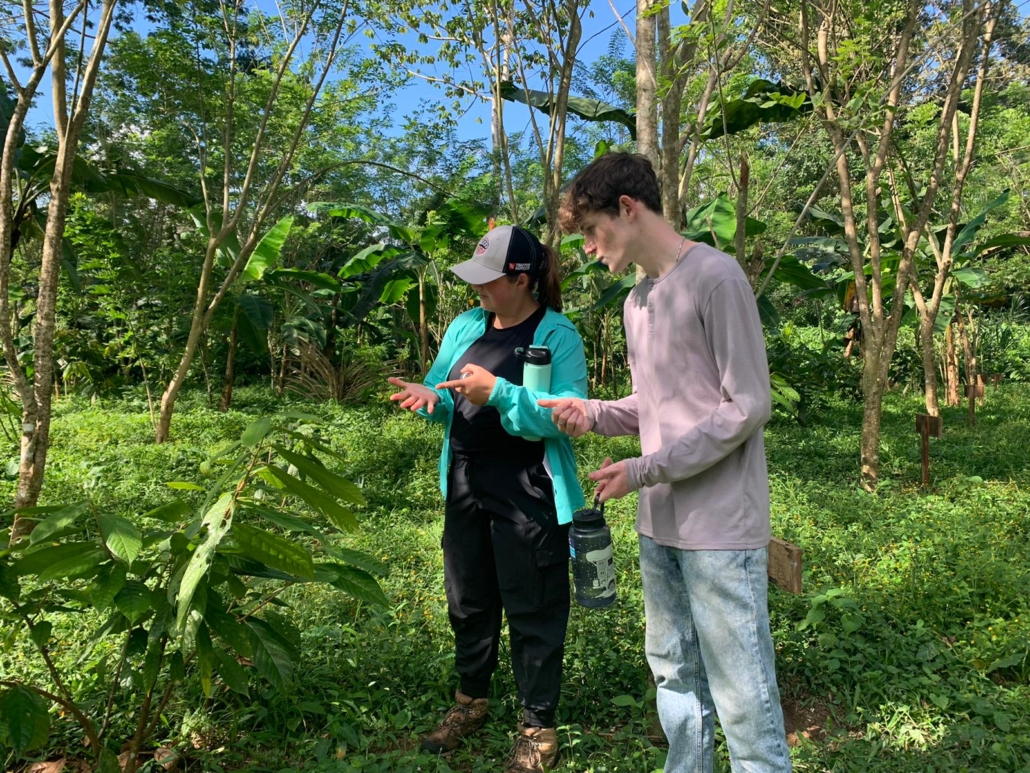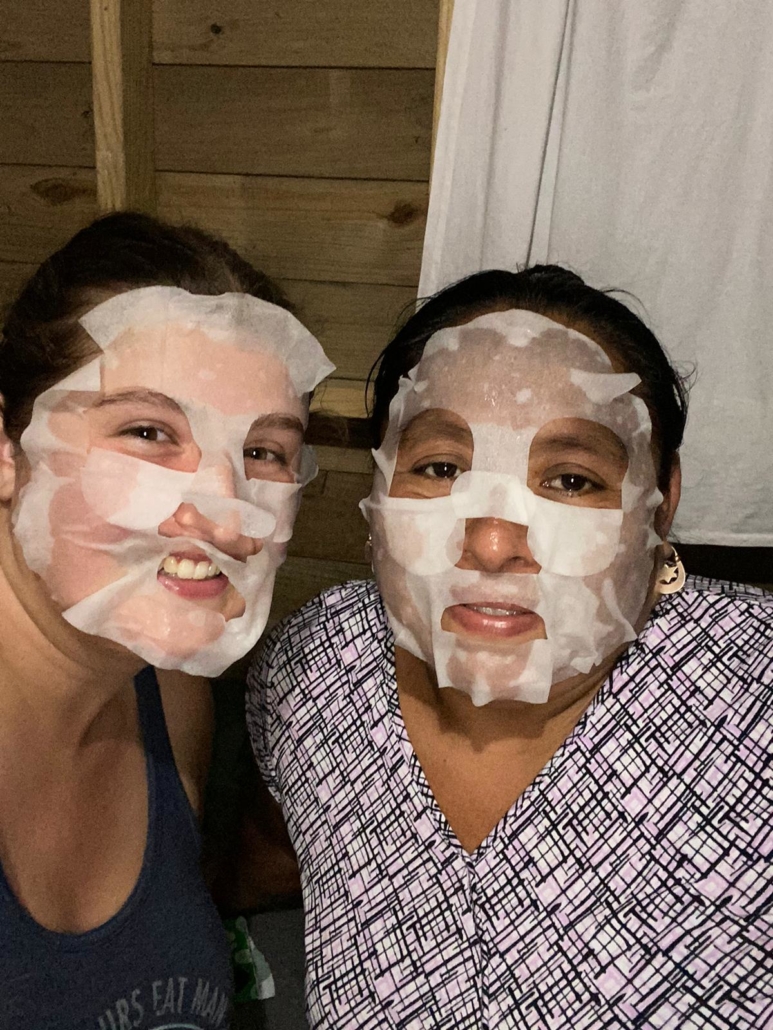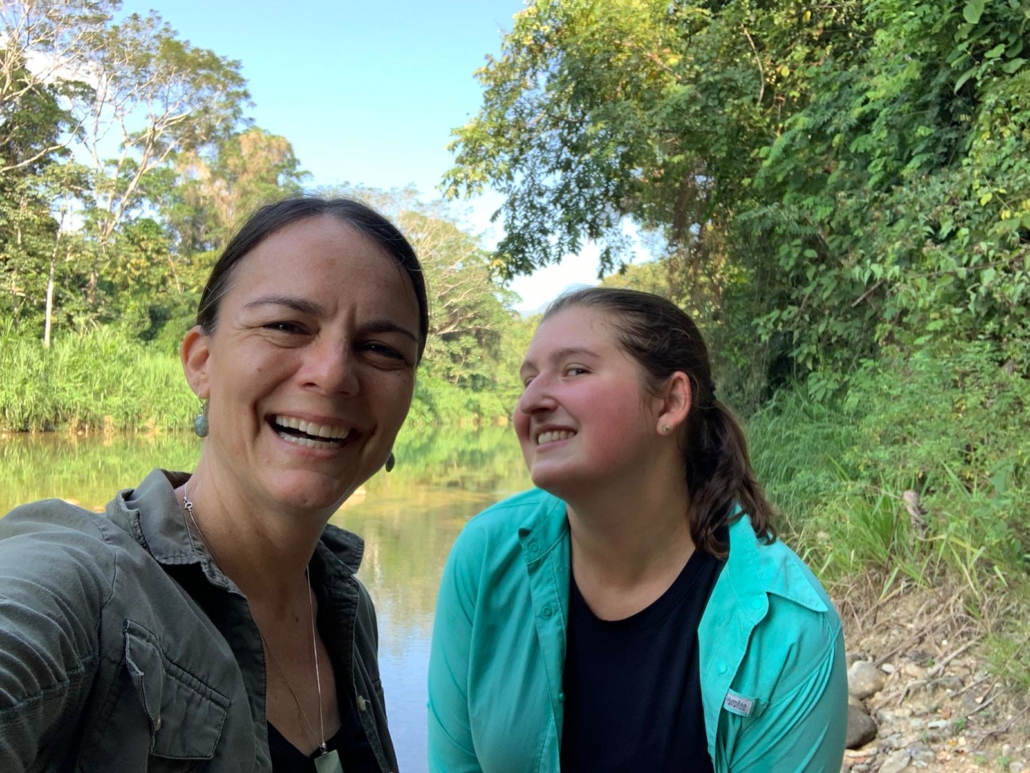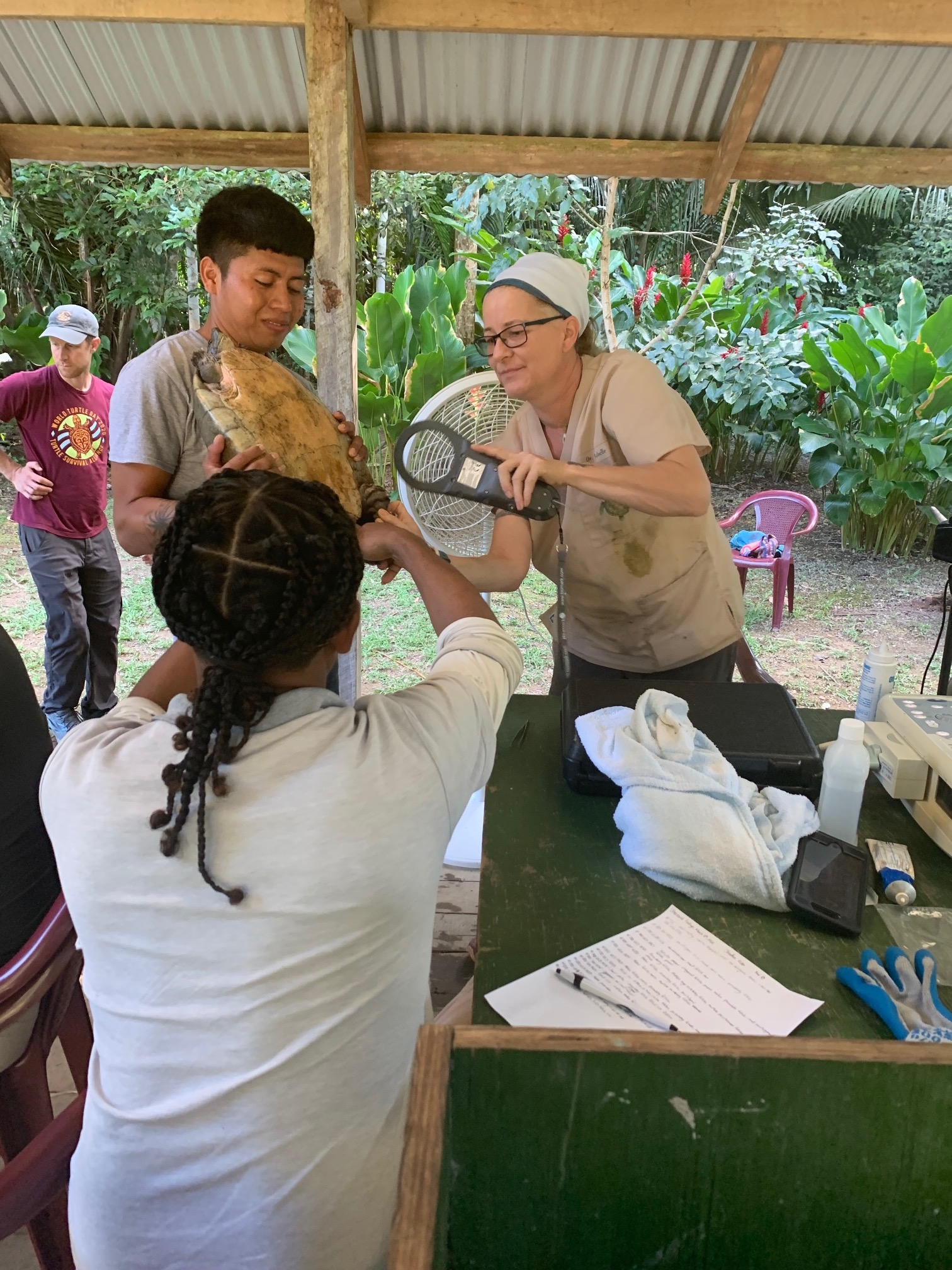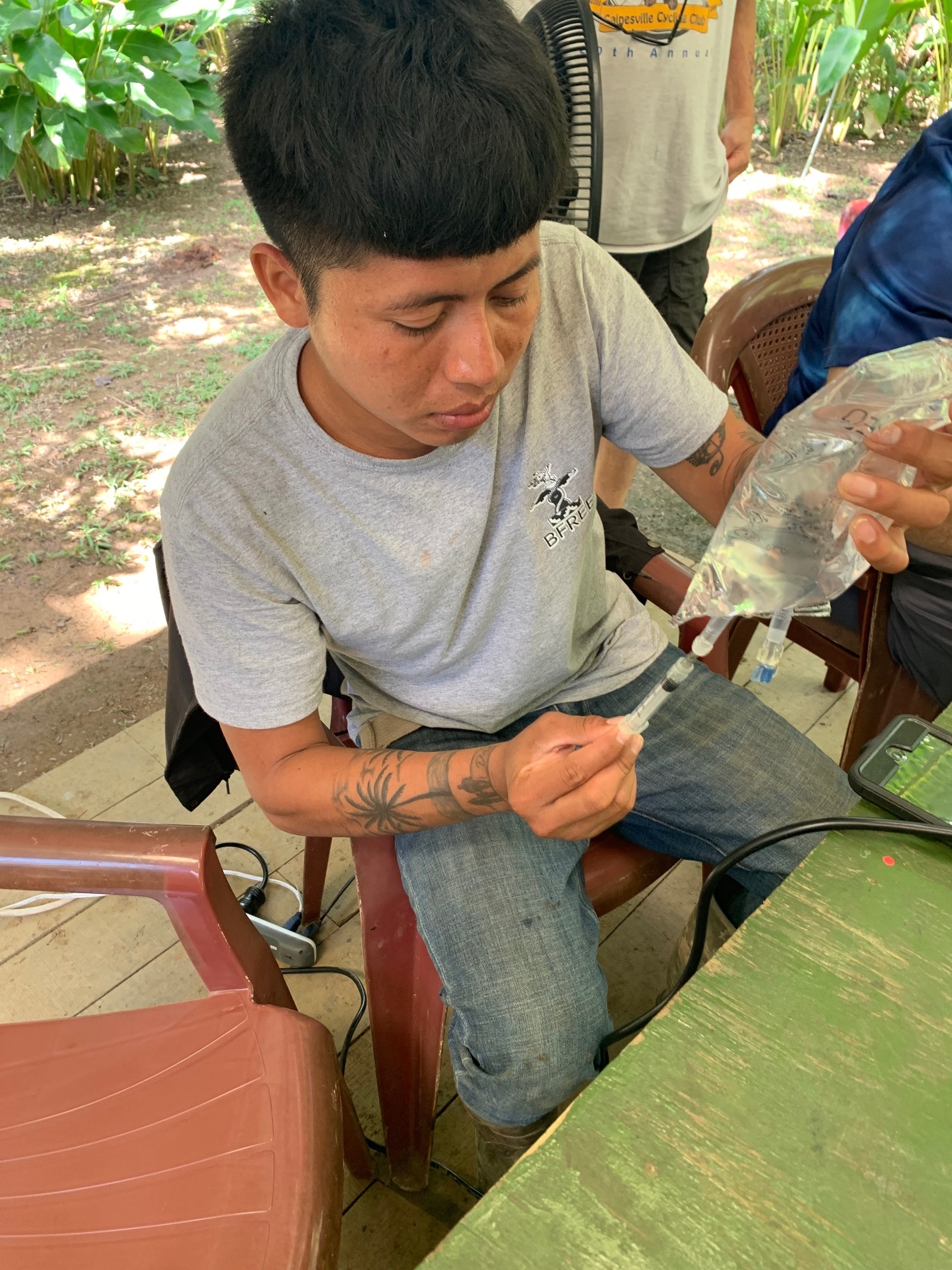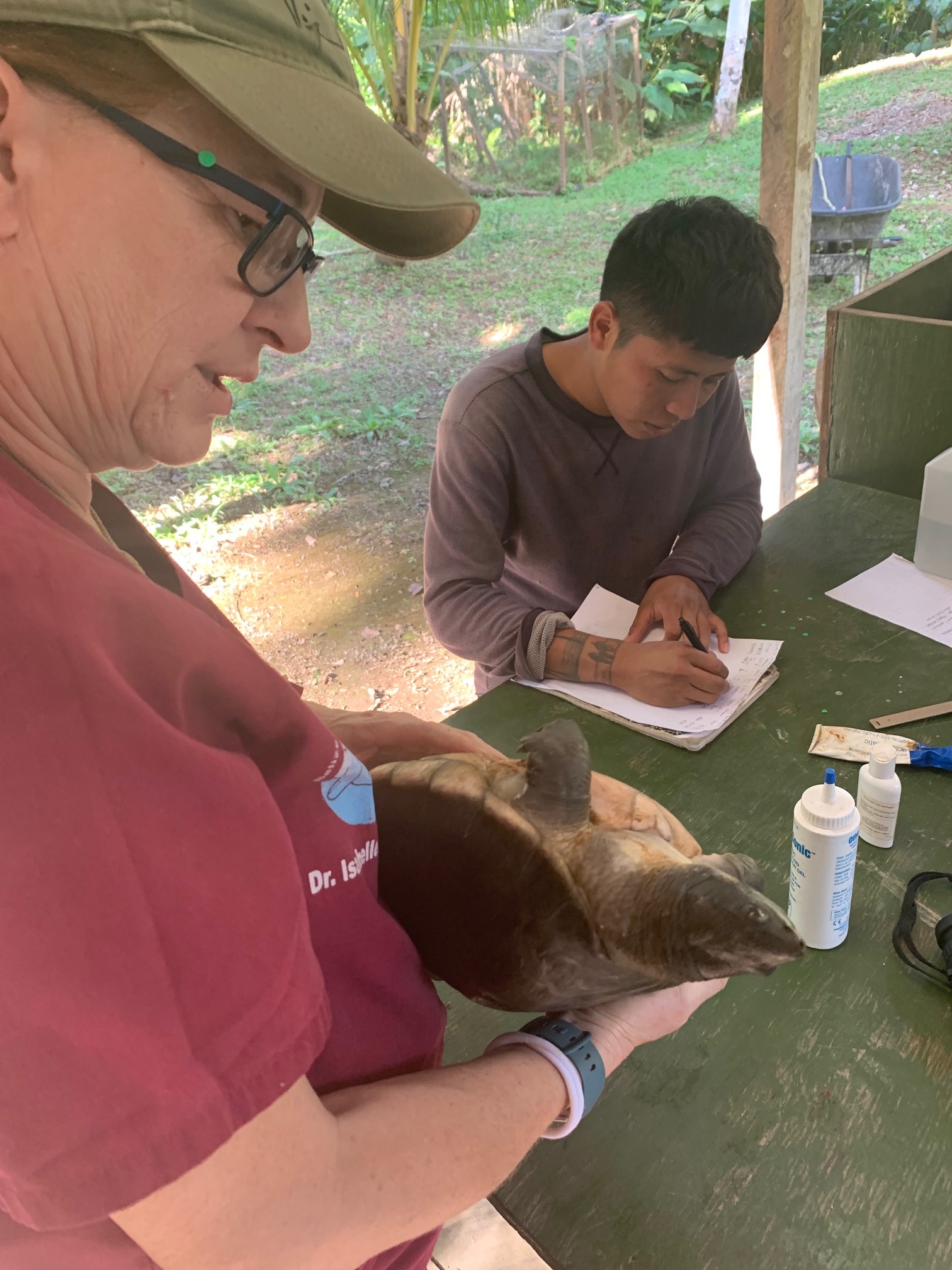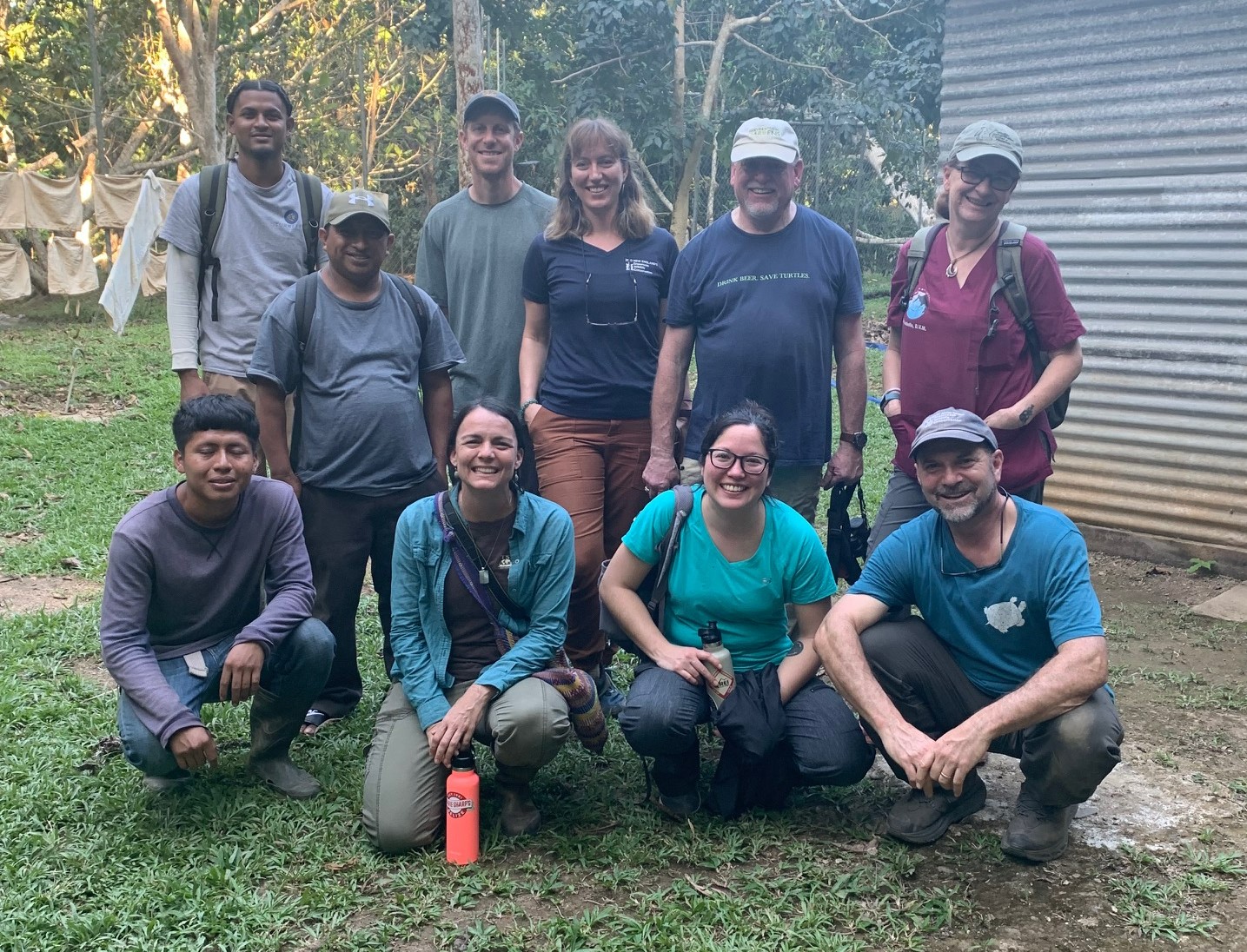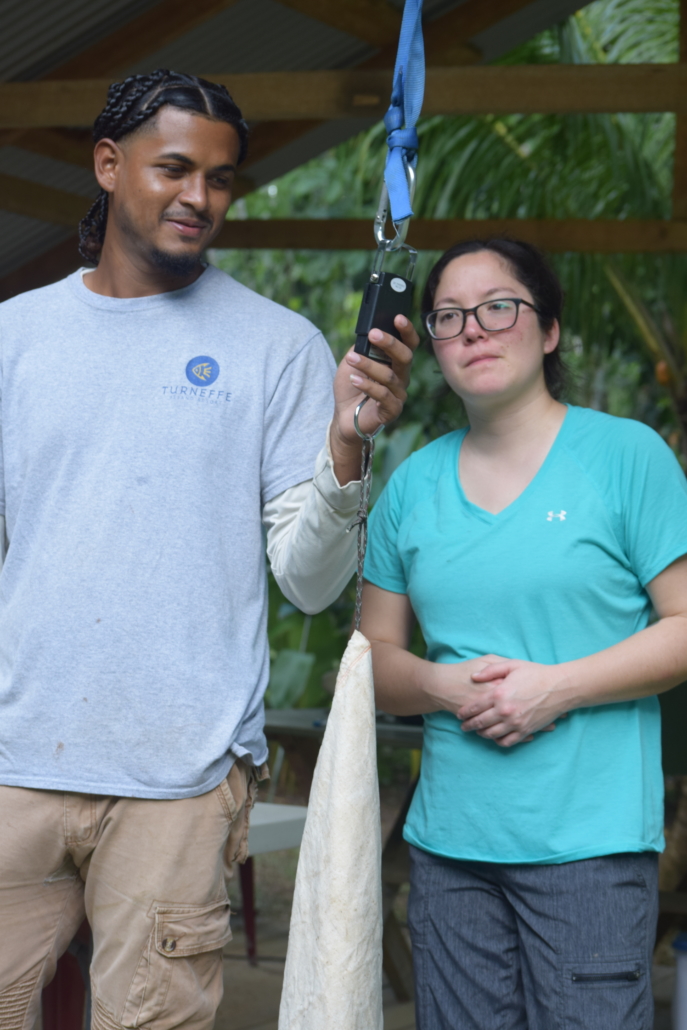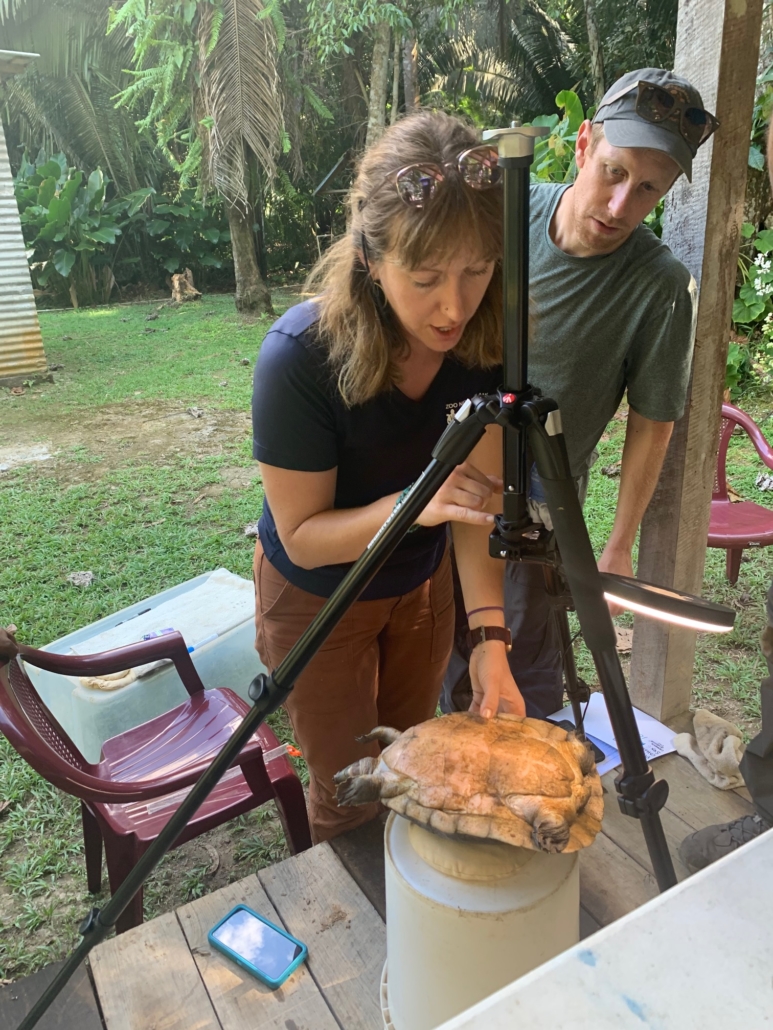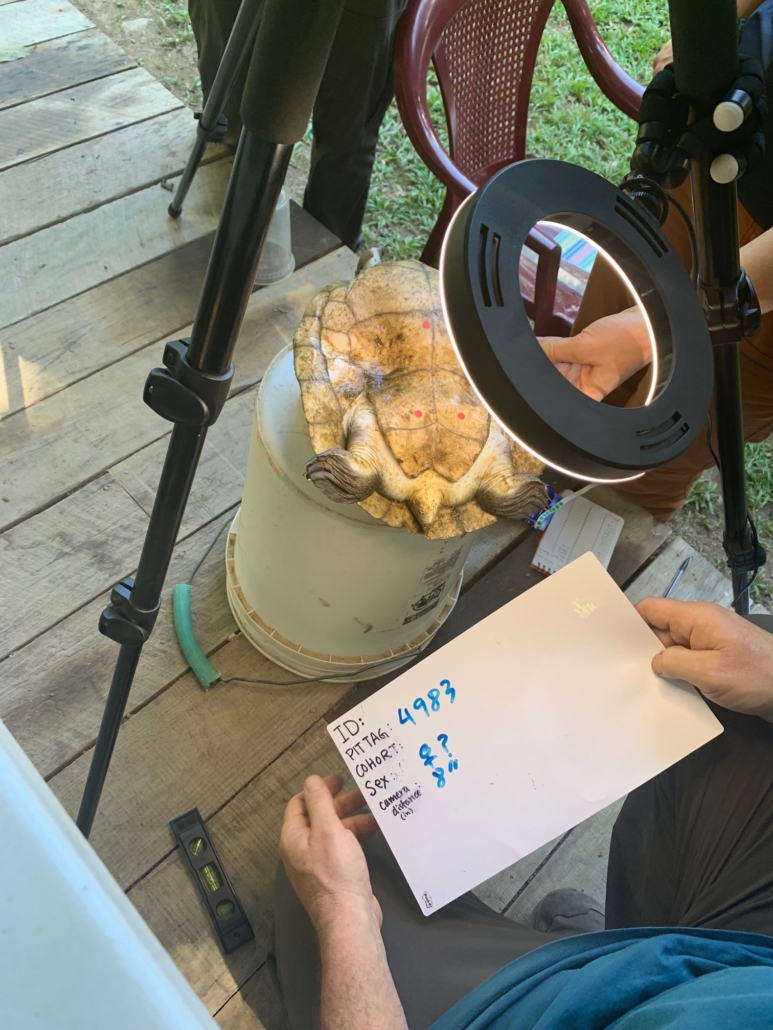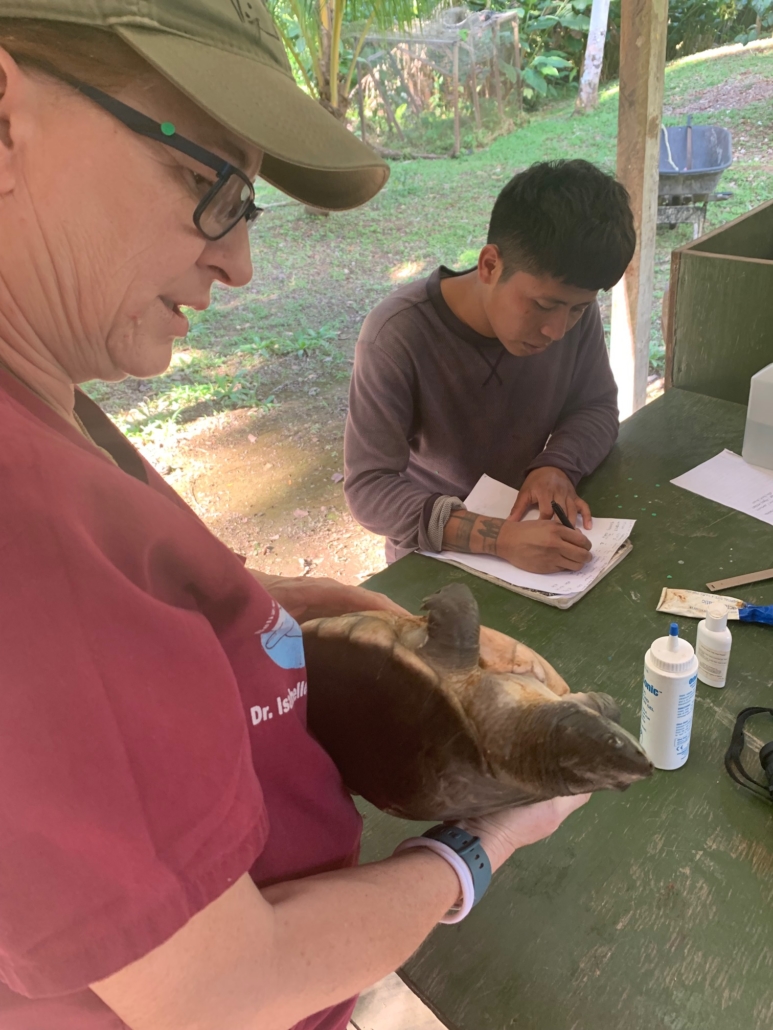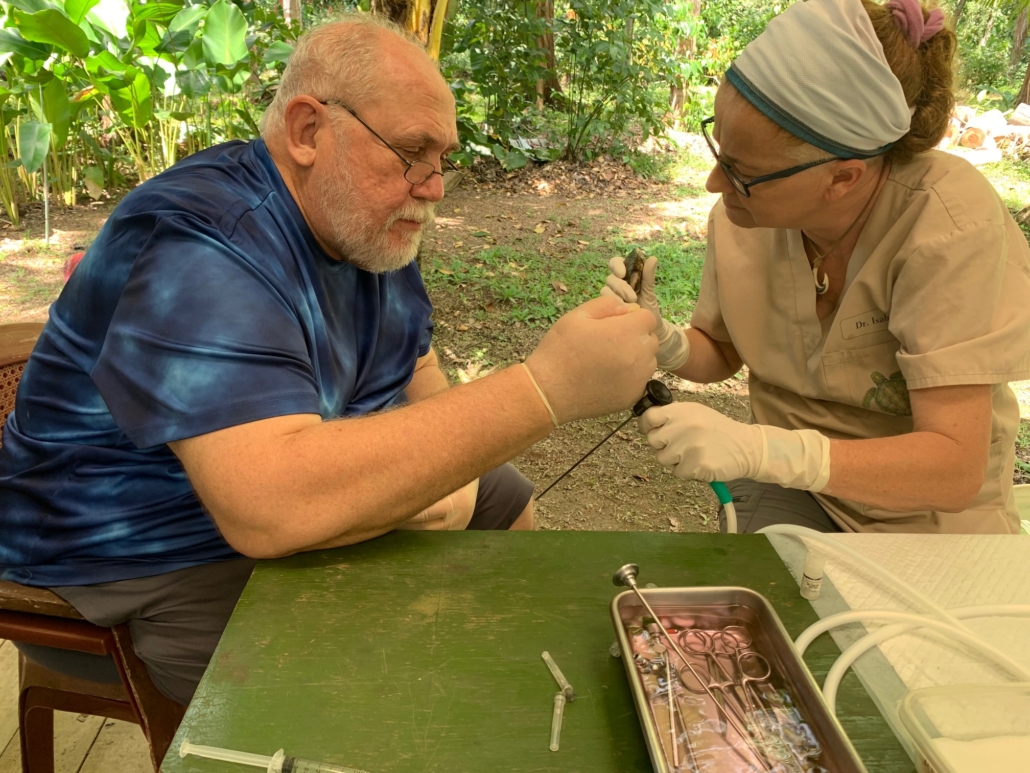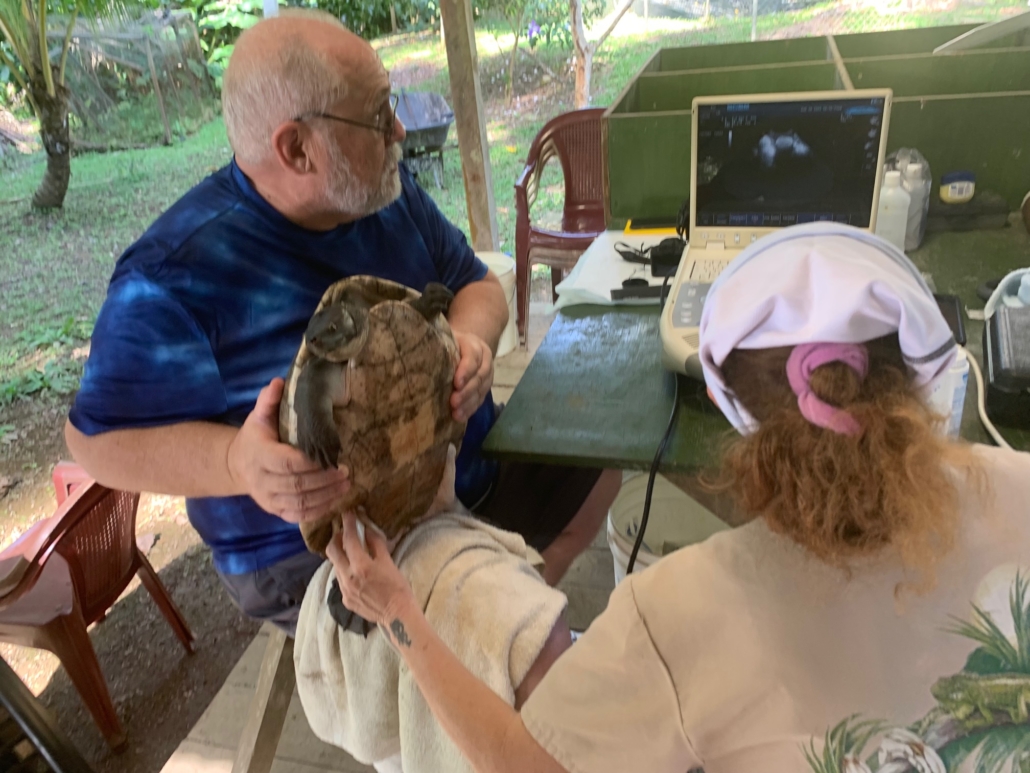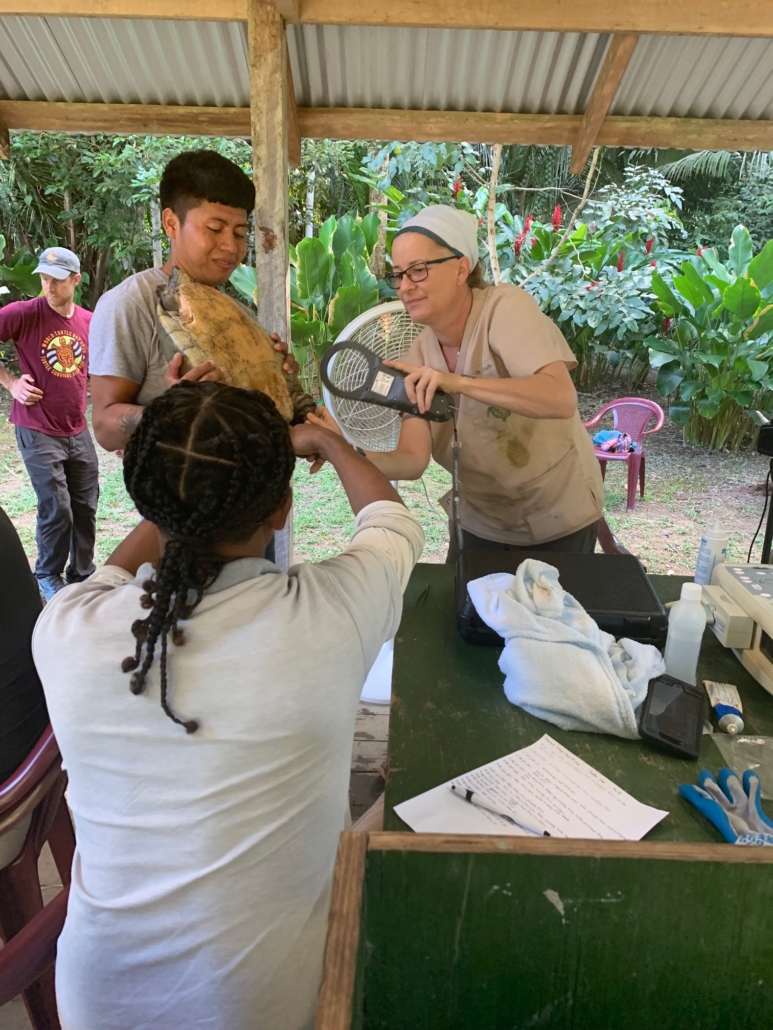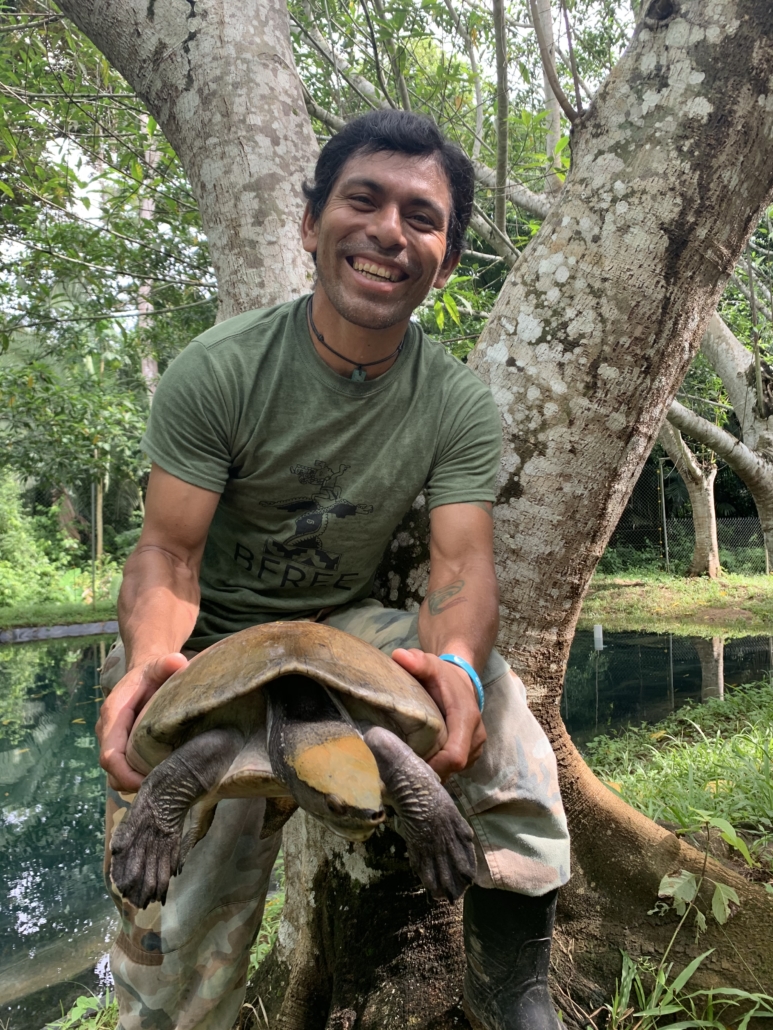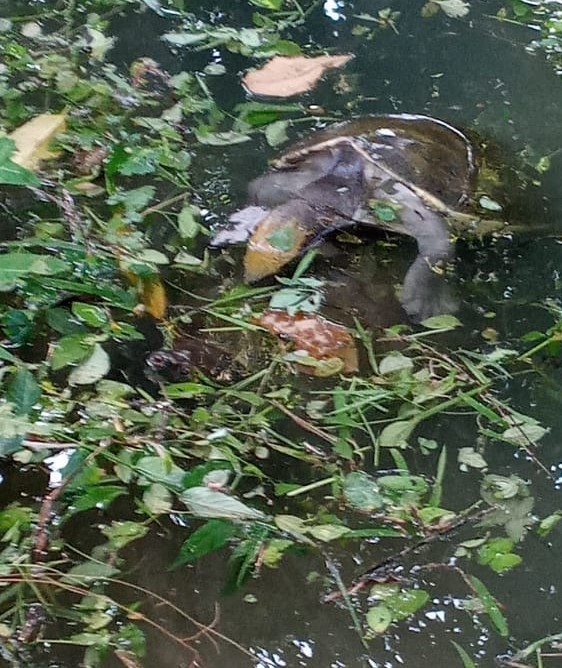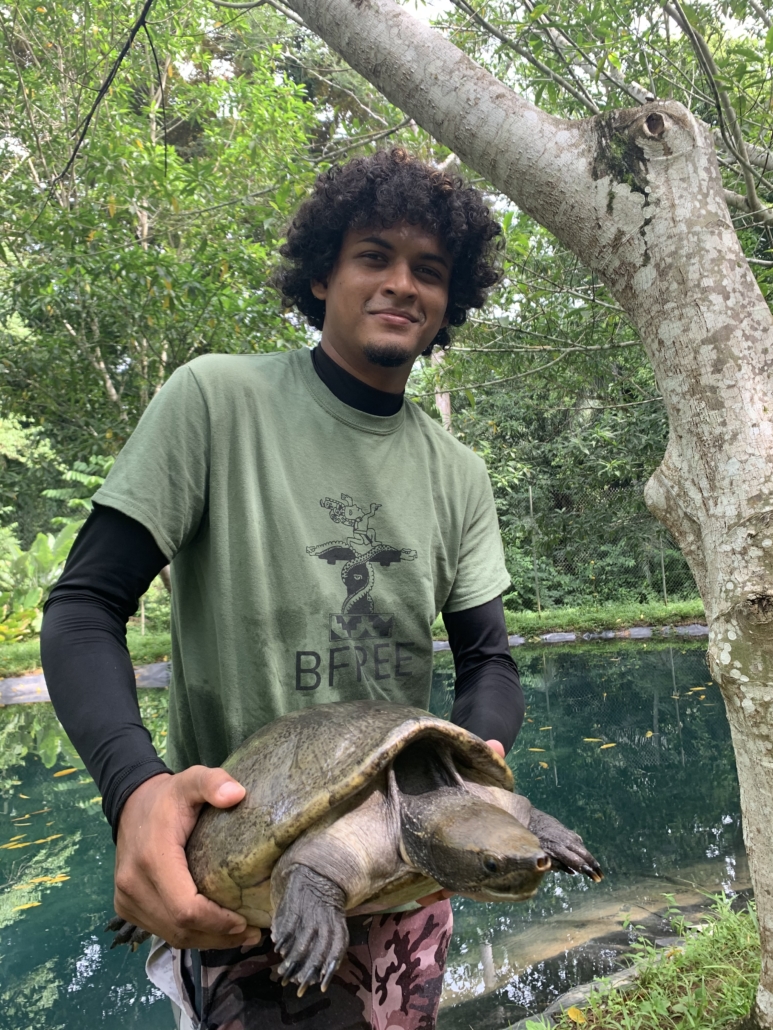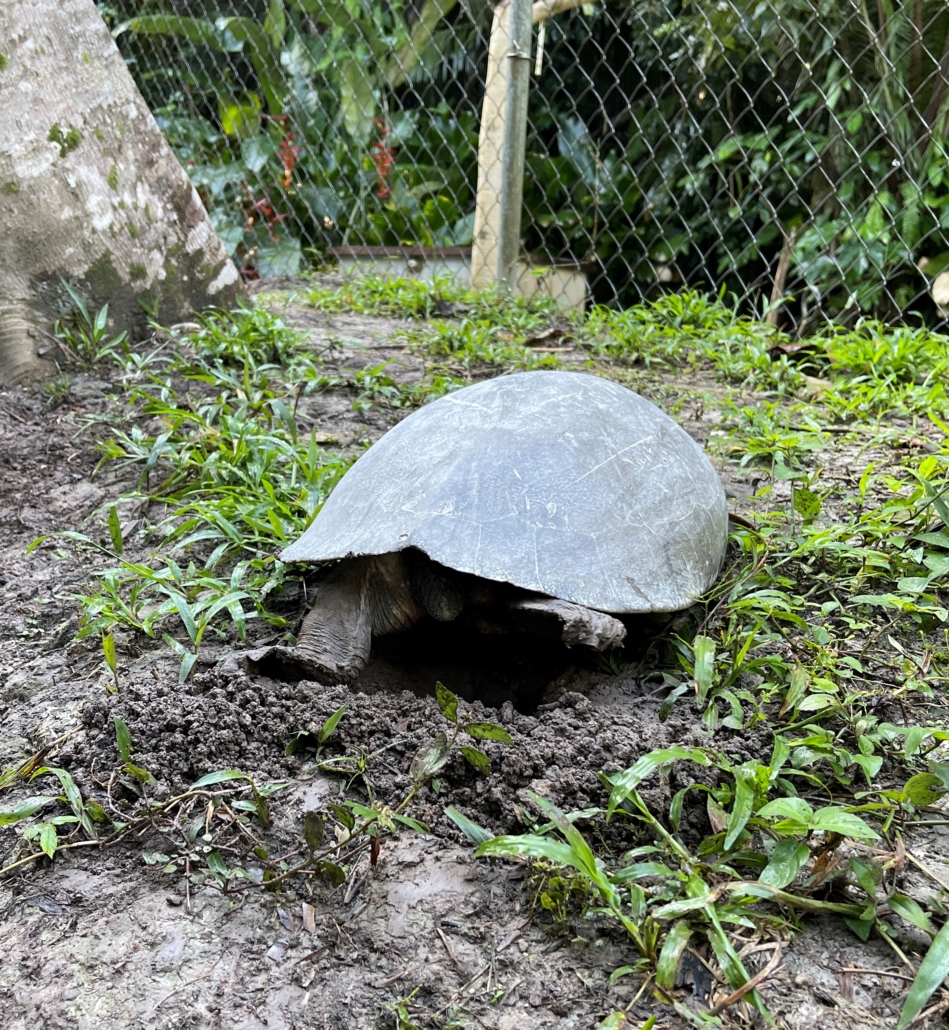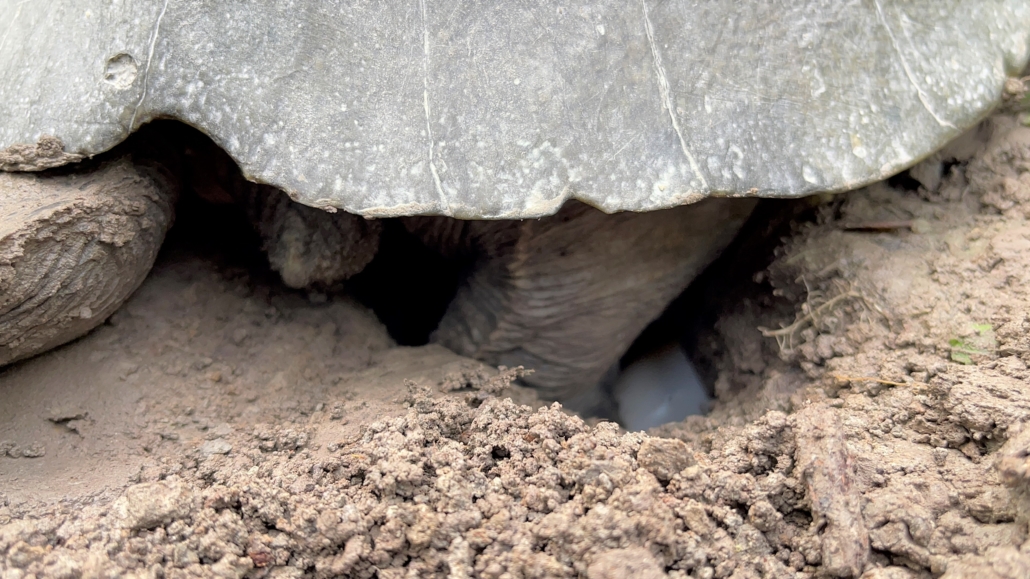BFREE Welcomes Roxanna Chen as First Advanced Cacao Fellow
We are pleased to introduce BFREE’s newest staff member, Advanced Cacao Fellow, Roxanna Chen. Roxanna will spend the next year and a half investigating and determining best post-harvest processing of the criollo cacao at BFREE as well as characterizing the different varieties. She will also get training from experts and become BFREEs chocolate lab technician. During this time, she will work with BFREE staff and our university partners to experiment with, and ultimately, determine best practices for processing Criollo cacao from bean to bar grown in the cacao agroforestry project.
Prior to entering the Fellowship Program this month, Roxanna was already interacting with student groups and university collaborators. She spent time with students from Bethel University during January (pictured above) and has interacted with most groups and researchers in her months working in the BFREE kitchen. During the visit to BFREE by Penn State faculty, she participated in a Sensory/Tasting class offered to BFREE staff by Helene Hopfer, Food Science Researcher. Soon after, Roxanna was offered a scholarship to participate in the Penn State Chocolate Short Course this coming June.
About Roxanna
Roxanna was born in San Pedro Columbia, a Qeq’chi Maya community in the Toledo District. In 2013, she received an Associate’s degree in Business Science and began working as a part-time cashier. While employed at Maya Mountain Cacao Ltd, she further pursued her studies and attained a Bachelor’s degree in Business Management. During her seven-year tenure at MMC, she moved up the ranks from a part-time cashier and became General Manager of the company in 2019. Roxanna has great passion for cacao and the conservation of the environment.
From a tender age, she developed a great interest in nature and enjoyed the beauty of flora and fauna. Her interests lies in Science, creative arts, and food processes. In 2022, she received an Advanced Cake Decorating Certificate and a Fine Art Bartender Certificate. She later joined the Belize Red Cross as a volunteer and became a part-time helper at a non-profit organization called Xucaneb. Her involvement at Xucaneb (Maya word meaning “sacred mountain”) allowed her to witness and participate in conservation efforts; to reforest the river banks of San Pedro Columbia with a primary focus of restoring the river ecosystem and its river bank. In early 2023, she came to BFREE Field Station as an assistant cook and now works as an Advanced Cacao Fellow.
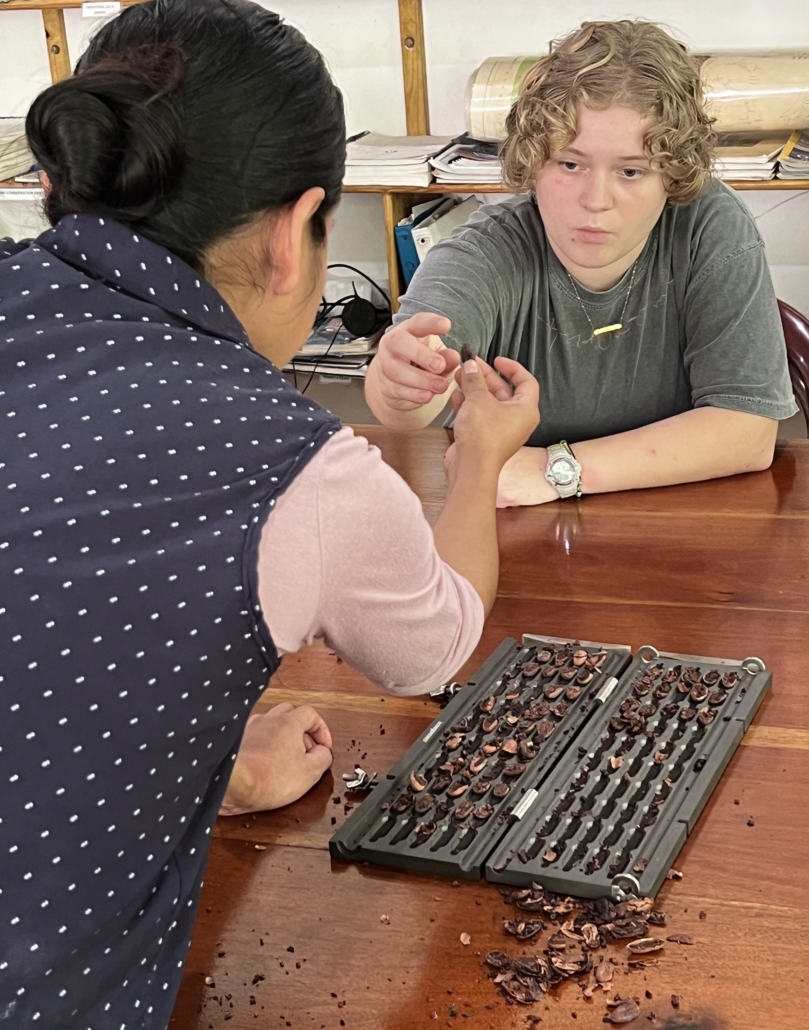
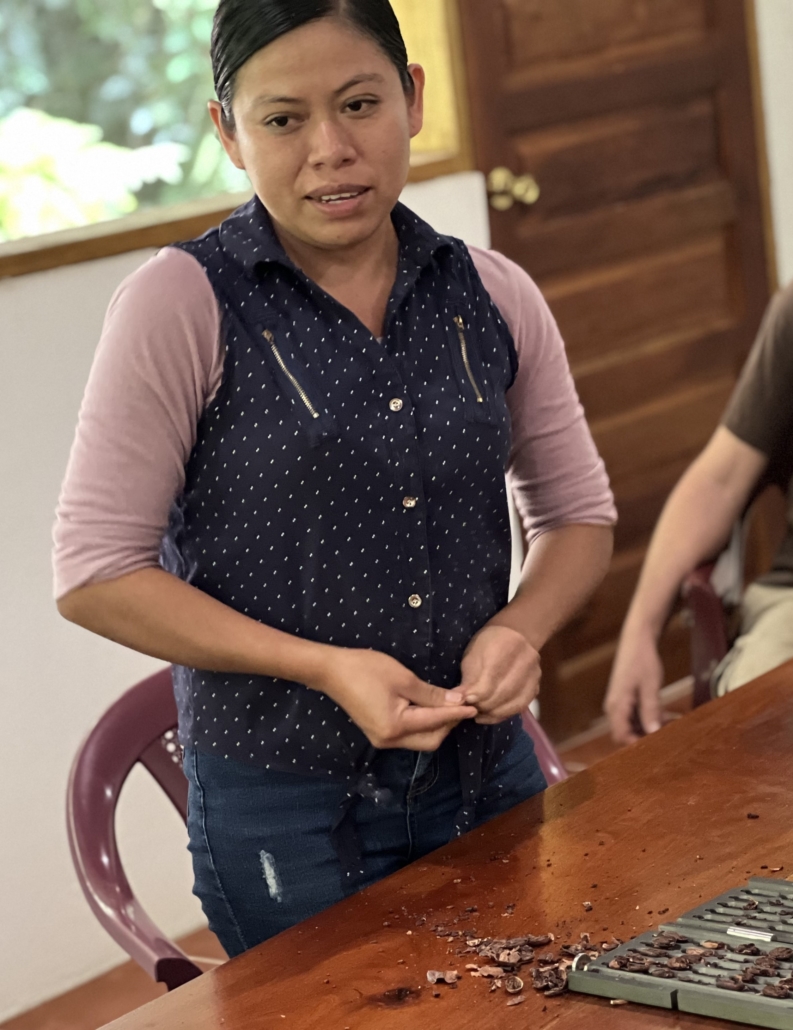
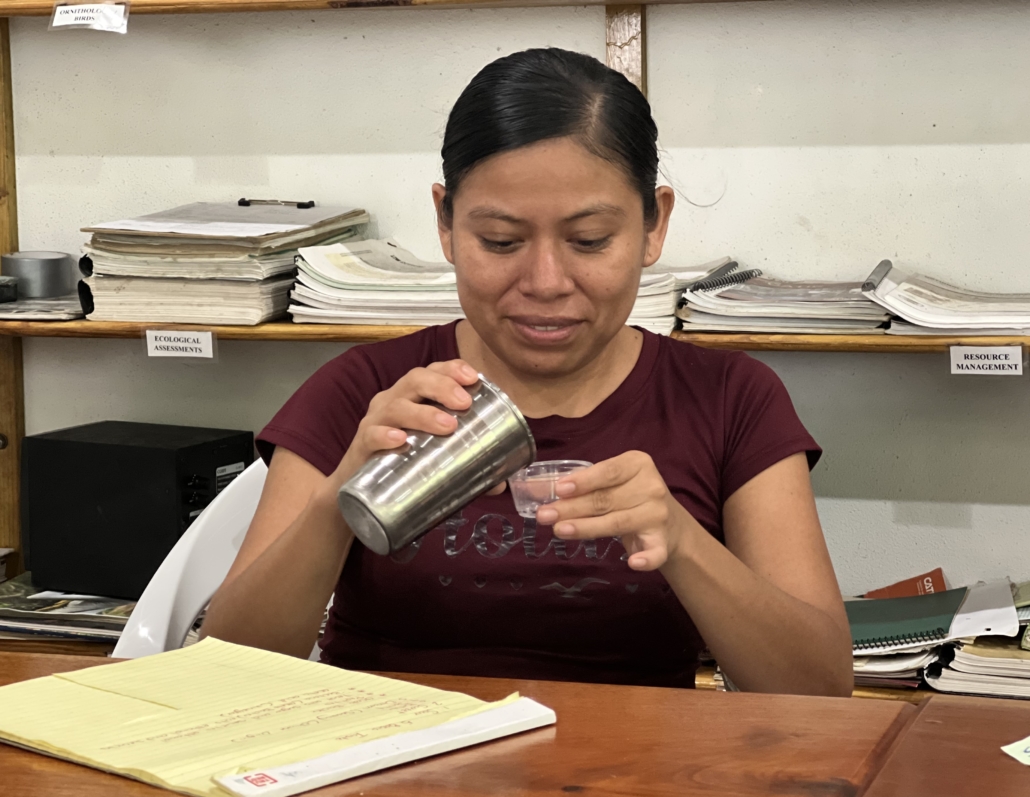
About the BFREE Science and Education Fellowship Program
Established in 2017, the BFREE Science and Education Fellowship Program is a two-year immersive training opportunity for recent Belizean junior college and college graduates who exhibit leadership potential combined with a clear interest in the conservation of the country’s natural resources. The BFREE Fellows Program is designed to improve leadership and professional skills, as well as build lasting, sustainable partnerships between emerging Belizean leaders, BFREE and its many conservation partners.
BFREE Fellows are given a two-year work assignment in one of three focal areas: Wildlife Conservation, Cacao Agroforestry, or Protected Areas Management (this focal area is currently in development). Participants build a broad network with international students, professors and researchers who utilize the BFREE field station for their study abroad courses and their scientific research projects. Throughout the program, there are opportunities to be mentored by staff and visiting researchers as well as to receive specialized training.
By working in the field alongside seasoned professionals on a daily basis, BFREE Fellows have the opportunity to become budding experts in their area of focus. Fellows are based at the BFREE Field Station and Privately Protected Area which adjoins close to 1.5 million acres of lowland tropical rainforest. BFREE is dedicated to the preservation and conservation of the Maya Mountains Massif through environmental education, outreach, training, and research.

